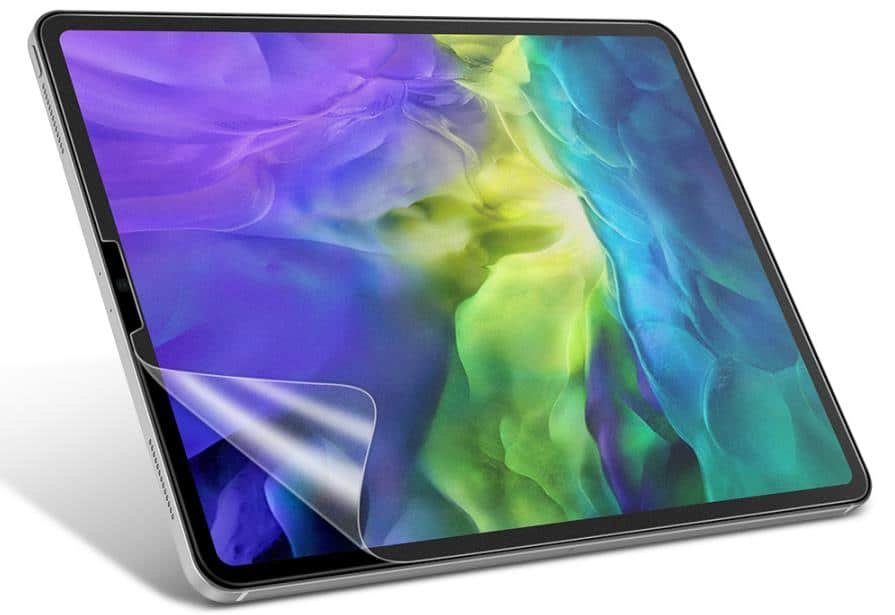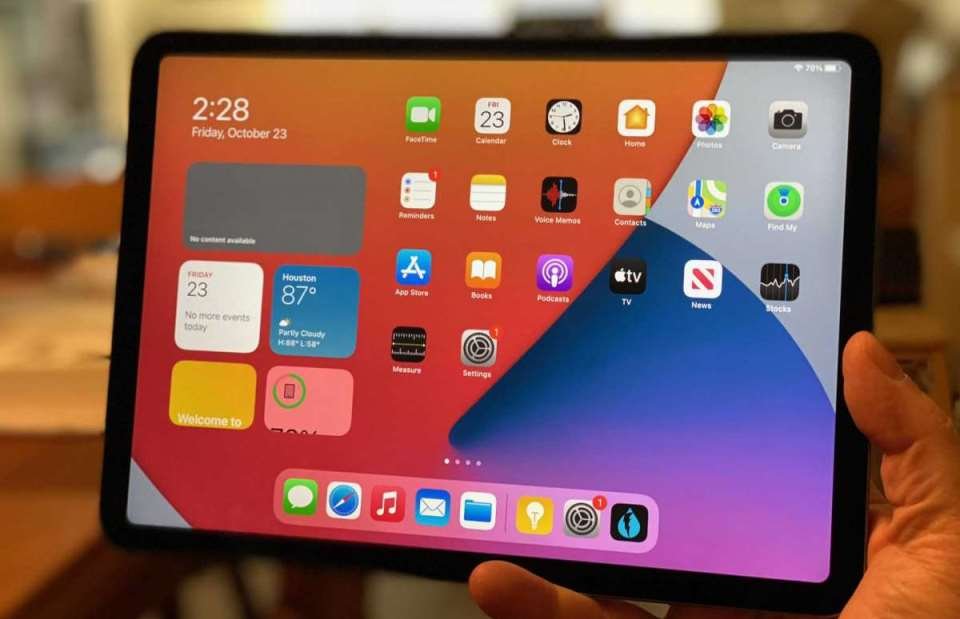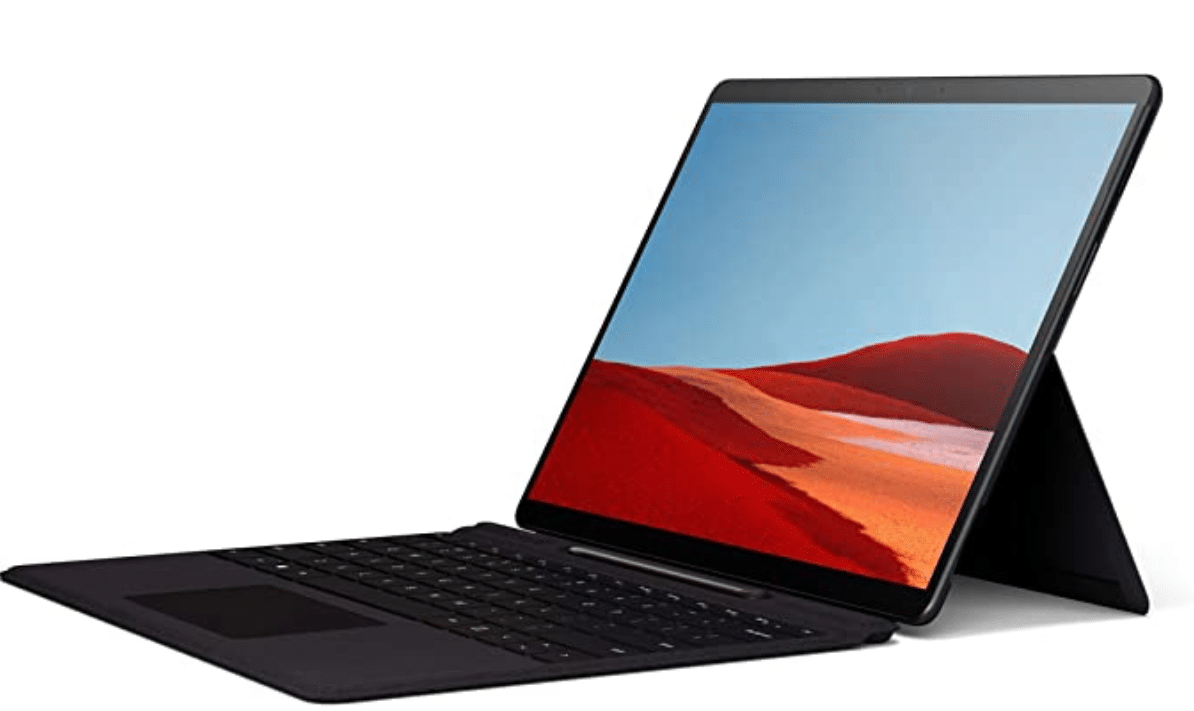As a medical student, carrying a tablet can significantly lighten the load of textbooks while offering powerful tools for research and study. Whether you’re reviewing journals, studying human anatomy, or preparing for exams, having the best tablet for medical school can transform the way you learn. Tablets provide portability, versatility, and access to a wealth of digital resources essential for modern medical education.
Choosing the right tablet for medical school goes beyond the basics. You need a device that can handle demanding coursework, such as viewing high-resolution anatomical illustrations, reading e-textbooks, and running educational apps. A tablet with a lightweight design, exceptional display, stylus support, long battery life, and fast connectivity will help you keep up with the rigorous demands of medical school.
However, not all tablets meet these requirements. Common challenges include poor visibility in direct sunlight, short battery life, insufficient RAM, low storage capacity, and the lack of support for external keyboards. Selecting the wrong tablet can hinder productivity and make long study sessions cumbersome.
To simplify your decision-making process, I’ve compiled a list of the 8 best tablets for medical school. These devices have been carefully tested for their performance, portability, and budget-friendliness to ensure they cater to the unique needs of medical students. Whether you’re looking for a high-end powerhouse or a budget-friendly option, this guide will help you find the perfect study companion.
Table of Contents
List of the Best Tablet For Medical School:-
1. Lenovo Tab M10 Plus (3rd Gen)
Lenovo Tab M10 Plus (3rd Gen) is a solid choice for students looking for an affordable yet capable tablet for medical school. Its 10.6-inch 2K IPS display, with a resolution of 2000 x 1200, provides sharp visuals and vibrant colors, making it easy to view anatomy illustrations, e-textbooks, and online journals. During my testing, the screen’s brightness and clarity stood out, even during long study sessions.

Powered by a MediaTek Helio G80 processor with up to 6GB RAM, the Tab M10 Plus performs well for light multitasking and running educational apps. I found it responsive for note-taking, referencing medical literature, and browsing online resources. It runs Android 12, offering a clean and intuitive interface, with access to apps like medical calculators and e-book readers from the Google Play Store.
What sets this tablet apart is its Reading Mode, which reduces eye strain by adjusting color tones to resemble paper. This feature was particularly useful for long hours of reading medical content. Weighing just 465g, it’s lightweight and portable, making it convenient to carry between lectures and study sessions.
The 7,700mAh battery delivers up to 12 hours of usage, ensuring it lasts through a full day of classes and study sessions. Whether I was annotating notes or streaming anatomy videos, the battery held up without needing frequent recharging.
Specifications of Lenovo Tab M10 Plus (3rd Gen)
| Feature | Details |
|---|---|
| Display | 10.6-inch 2K IPS, 2000 x 1200 resolution |
| Processor | MediaTek Helio G80 |
| RAM | 4GB / 6GB |
| Storage | 64GB / 128GB, expandable via microSD |
| OS | Android 12 |
| Battery Life | Up to 12 hours |
| Weight | 465g |
| Special Feature | Reading Mode |
- 2K display offers sharp visuals for medical illustrations and e-books.
- Reading Mode reduces eye strain during extended study sessions.
- Lightweight and portable, perfect for medical students on the go.
- Affordable price without compromising key features.
- Performance is limited for heavy multitasking or advanced apps.
- No stylus support, which may limit note-taking options.
- Base storage (64GB) might feel insufficient for some users.
2. Lenovo Tab P11 Plus
Lenovo Tab P11 Plus is an excellent tablet for medical school, offering a balance of performance, portability, and display quality. Its 11-inch 2K IPS display, with a resolution of 2000 x 1200, is vibrant and sharp, making it ideal for reviewing anatomy charts, reading e-textbooks, and accessing online journals. I found the large screen size and clarity perfect for long study sessions, providing a comfortable and immersive experience.

Powered by the MediaTek Helio G90T processor and up to 6GB RAM, the Tab P11 Plus delivers smooth performance for multitasking. Whether I was switching between medical apps, referencing textbooks, or taking notes, the tablet performed seamlessly. Running Android 11, it provides a user-friendly interface and access to a wide range of apps tailored for medical students.
The tablet includes a Reading Mode, which reduces eye strain by adjusting the screen’s brightness and tone for extended reading sessions. Its quad-speaker system with Dolby Atmos delivers clear audio, making it great for watching medical lectures or podcasts. At 490g, it’s lightweight and portable, making it easy to carry between lectures and study areas.
The 7,700mAh battery provides up to 15 hours of usage, allowing me to study and attend classes throughout the day without worrying about recharging. The long battery life is a standout feature, especially for students with demanding schedules.
Specifications of Lenovo Tab P11 Plus
| Feature | Details |
|---|---|
| Display | 11-inch 2K IPS, 2000 x 1200 resolution |
| Processor | MediaTek Helio G90T |
| RAM | 4GB / 6GB |
| Storage | 64GB / 128GB, expandable via microSD |
| OS | Android 11 |
| Battery Life | Up to 15 hours |
| Weight | 490g |
| Special Feature | Reading Mode, Dolby Atmos |
- 2K IPS display is perfect for detailed visuals and e-textbooks.
- Lightweight and portable, ideal for carrying between classes.
- Reading Mode reduces eye strain during extended study sessions.
- Long battery life supports all-day use.
- Base model RAM (4GB) may feel limited for multitasking.
- No stylus support included, which may limit note-taking options.
- Performance may struggle with very heavy multitasking or demanding apps.
3. Apple iPad Pro (2nd Generation)
Apple iPad Pro (2nd Generation) is an exceptional tablet for medical school, combining premium performance and a stunning display to meet the demands of rigorous study schedules. The 12.9-inch Liquid Retina display, with a 2732 x 2048 resolution, provides sharp visuals and vibrant colors, making it perfect for reviewing detailed anatomy diagrams and reading e-textbooks. I found the large screen and ProMotion technology (120Hz) enhanced my productivity by offering a smooth and immersive experience during long study sessions.

Powered by the A12Z Bionic chip, the iPad Pro handles multitasking with ease. Whether I was switching between medical apps, streaming lectures, or annotating notes, the performance was seamless. The iPadOS offers a user-friendly interface with multitasking features like Split View, making it easy to reference materials while taking notes simultaneously.
The Apple Pencil (2nd Generation) support makes this tablet a perfect companion for medical students. I used it for precise note-taking, annotating e-textbooks, and sketching anatomy diagrams. Paired with the Magic Keyboard, the iPad Pro transforms into a laptop-like setup, perfect for extended study sessions.
The iPad Pro offers up to 10 hours of battery life, which allowed me to work throughout the day without needing to recharge frequently. At 641g, it’s lightweight enough to carry between lectures and study spots, despite its large screen size.
We have also describe all other details in our expert review guide of Apple iPad Pro.
Specifications of Apple iPad Pro (2nd Generation)
| Feature | Details |
|---|---|
| Display | 12.9-inch Liquid Retina, 2732 x 2048, 120Hz ProMotion |
| Processor | A12Z Bionic Chip |
| RAM | 6GB |
| Storage | 128GB / 256GB / 512GB / 1TB |
| OS | iPadOS |
| Battery Life | Up to 10 hours |
| Weight | 641g |
| Accessories | Magic Keyboard, Apple Pencil (2nd Gen) |
- Large Liquid Retina display provides excellent clarity for medical diagrams and e-books.
- Apple Pencil support is ideal for precise note-taking and annotations.
- Magic Keyboard compatibility transforms it into a laptop-like device.
- Premium build quality with lightweight portability.
- High price, especially with accessories like the Apple Pencil and Magic Keyboard.
- No expandable storage, limiting flexibility for heavy users.
- Battery life could be longer for extended study sessions.
4. Apple iPad Air (4th Generation)
Apple iPad Air (4th Generation) is an excellent choice for students seeking a reliable and high-performing tablet for medical school. Its 10.9-inch Liquid Retina display, with a resolution of 2360 x 1640, provides vibrant colors and sharp clarity, making it ideal for viewing anatomy diagrams, reading medical e-textbooks, and streaming lectures. I found the display size perfect for multitasking while maintaining a compact and portable form.

Powered by the A14 Bionic chip, the iPad Air handles demanding tasks with ease. I was impressed by its ability to run multiple apps simultaneously, such as referencing medical resources while taking notes. With iPadOS 14 (upgradable), the tablet offers intuitive multitasking features like Split View, allowing for a seamless study experience.
The iPad Air supports the Apple Pencil (2nd Generation), which I used for precise note-taking and annotating medical texts. It’s incredibly responsive and made studying more interactive. Pairing the tablet with the Magic Keyboard further enhanced productivity, offering a comfortable typing experience for extended sessions.
Weighing just 458g, the iPad Air is lightweight and easy to carry around campus or between study sessions. The 10-hour battery life ensured I could use it throughout the day without frequent recharging, even during long study hours.
Specifications of Apple iPad Air (4th Generation)
| Feature | Details |
|---|---|
| Display | 10.9-inch Liquid Retina, 2360 x 1640 resolution |
| Processor | A14 Bionic Chip |
| RAM | 4GB |
| Storage | 64GB / 256GB |
| OS | iPadOS 14 (upgradable) |
| Battery Life | Up to 10 hours |
| Weight | 458g |
| Accessories | Magic Keyboard, Apple Pencil (2nd Gen) |
- Liquid Retina display provides excellent clarity for medical resources.
- A14 Bionic chip ensures smooth performance for multitasking and medical apps.
- Apple Pencil compatibility enhances note-taking and annotations.
- Lightweight and portable, perfect for medical students on the go.
- Base storage (64GB) may feel limiting for heavy resource users.
- Magic Keyboard and Apple Pencil sold separately, increasing the overall cost.
- No Face ID, relying on Touch ID for security.
5. Apple iPad Mini (6th Generation)
Apple iPad Mini (6th Generation) is a compact and powerful tablet for medical school, offering excellent performance and portability for students with demanding schedules. Its 8.3-inch Liquid Retina display, with a resolution of 2266 x 1488, delivers sharp visuals and vibrant colors. I found the display perfect for quick reference to medical charts, e-textbooks, and anatomy diagrams, especially during on-the-go study sessions.

Powered by the A15 Bionic chip, the iPad Mini handles multitasking and medical apps with ease. I used it for reviewing case studies and taking notes in Quick Notes, and the experience was smooth and responsive. The iPadOS 15 features, like Split View, allow me to switch seamlessly between apps, making it easy to reference resources while jotting down notes.
The iPad Mini is compatible with the Apple Pencil (2nd Generation), which magnetically attaches and charges on the side. I used the Pencil to annotate e-textbooks and draw anatomy sketches, and its precision was excellent for detailed tasks. The compact size also made it comfortable to use one-handed, a big plus during lectures or rounds.
Using this device is convenient and allows for easy movement. Students in medicine appreciate the precise precision of charging Apple’s Pencil as it allows them to write and draw more effectively.
Weighing just 293g, the iPad Mini is incredibly lightweight and easy to carry, fitting perfectly into a coat pocket or small bag. Despite its compact size, the battery lasts up to 10 hours, ensuring it can keep up with a full day of study or clinical practice.
Specifications of Apple iPad Mini (6th Generation)
| Feature | Details |
|---|---|
| Display | 8.3-inch Liquid Retina, 2266 x 1488 resolution |
| Processor | A15 Bionic Chip |
| RAM | 4GB |
| Storage | 64GB / 256GB |
| OS | iPadOS 15 |
| Battery Life | Up to 10 hours |
| Weight | 293g |
| Accessories | Apple Pencil (2nd Gen) |
- Compact and lightweight, perfect for on-the-go medical students.
- Liquid Retina display delivers sharp visuals for anatomy diagrams and e-textbooks.
- A15 Bionic chip ensures smooth performance for medical apps.
- Apple Pencil support is great for annotations and note-taking.
- Base storage (64GB) may feel limited for resource-heavy users.
- No Magic Keyboard compatibility, which may limit productivity for long typing sessions.
- Compact size may feel small for multitasking-heavy tasks.
6. Samsung Galaxy Tab S7+
Samsung Galaxy Tab S7+ is a top-tier tablet for medical school, offering a stunning display and robust performance to meet the demands of medical students. Its 12.4-inch Super AMOLED display, with a 2800 x 1752 resolution and 120Hz refresh rate, delivers sharp visuals and vibrant colors, making it perfect for studying detailed anatomy diagrams, reading medical e-textbooks, and watching lectures. I found the display exceptionally smooth and immersive, especially for extended study sessions.

Powered by the Qualcomm Snapdragon 865+ processor and up to 8GB RAM, the Tab S7+ handles multitasking effortlessly. During my use, it ran medical apps, anatomy viewers, and research tools seamlessly. Samsung’s DeX mode was a game-changer, transforming the tablet into a desktop-like interface for more efficient multitasking and extended productivity.
The included S Pen is a standout feature, offering low-latency and precision input for note-taking, annotating medical diagrams, and jotting down important points during lectures. I found it intuitive and responsive, making it a valuable tool for organizing study materials. Pairing the tablet with the Book Cover Keyboard provided a laptop-like experience for typing assignments or lengthy notes.
The 10,090mAh battery offers up to 14 hours of usage, which comfortably lasts through long study days. Despite its large screen, the Tab S7+ is lightweight at 575g, making it easy to carry between lectures and study spaces.
Here is the detailed review of Samsung Galaxy Tab S7+
Specifications of Samsung Galaxy Tab S7+
| Feature | Details |
|---|---|
| Display | 12.4-inch Super AMOLED, 2800 x 1752, 120Hz |
| Processor | Qualcomm Snapdragon 865+ |
| RAM | 6GB / 8GB |
| Storage | 128GB / 256GB / 512GB, expandable up to 1TB |
| OS | Android 12 with One UI |
| Battery Life | Up to 14 hours |
| Weight | 575g |
| Accessories | S Pen included, Book Cover Keyboard optional |
- 12.4-inch Super AMOLED display offers stunning clarity for medical diagrams and videos.
- Snapdragon 865+ processor ensures smooth performance for medical apps and multitasking.
- S Pen included, perfect for note-taking and annotations.
- Long battery life supports all-day study sessions.
- Keyboard sold separately, increasing the overall cost.
- Large size may not be ideal for those seeking extreme portability.
- Premium price point compared to other tablets.
7. Microsoft Surface Pro X
Microsoft Surface Pro X is a sleek and lightweight tablet for medical school, offering a blend of portability and performance for students managing intense study schedules. Its 13-inch PixelSense touchscreen display with a 2880 x 1920 resolution provides excellent clarity and vibrant colors, making it ideal for studying anatomy diagrams, reading e-textbooks, and attending online lectures. I found the edge-to-edge screen spacious and immersive, perfect for multitasking.

Powered by the Microsoft SQ2 processor, the Surface Pro X delivers reliable performance for running medical apps and accessing online resources. During my use, Quick Note and medical research tools worked seamlessly. With Windows 11, multitasking was easy, especially with features like Snap Layouts, which allowed me to efficiently manage multiple apps while studying.
The Surface Slim Pen 2, compatible with the Surface Pro X, offers precise input for note-taking and annotating medical texts. I used it to write lecture notes and mark key points in e-books, and it was both responsive and natural to use. Pairing the tablet with the Surface Pro Keyboard transformed it into a laptop-like device, which was perfect for writing assignments and lengthy notes.
Weighing just 774g, the Surface Pro X is one of the lightest options for a large-screen tablet, making it ideal for carrying between lectures and study sessions. Its 15-hour battery life ensured that I could work all day without interruptions, even during long study marathons.
Specifications of Microsoft Surface Pro X
| Feature | Details |
|---|---|
| Display | 13-inch PixelSense, 2880 x 1920 resolution |
| Processor | Microsoft SQ1 / SQ2 |
| RAM | 8GB / 16GB |
| Storage | 128GB / 256GB / 512GB |
| OS | Windows 11 |
| Battery Life | Up to 15 hours |
| Weight | 774g |
| Accessories | Surface Slim Pen 2, Surface Pro Keyboard |
- 13-inch PixelSense display offers sharp visuals for medical diagrams and e-books.
- Slim Pen 2 compatibility enhances note-taking and productivity.
- Windows 11 features optimize multitasking for study purposes.
- Long-lasting 15-hour battery life supports extended usage.
- No Thunderbolt support, limiting advanced peripheral options.
- Keyboard and pen sold separately, increasing the overall cost.
- Performance may lag during heavy multitasking with demanding apps.
8. Microsoft Surface Pro 7
Microsoft Surface Pro 7 is a powerful and versatile tablet for medical school, offering a perfect combination of performance and portability. Its 12.3-inch PixelSense touchscreen display with a 2736 x 1824 resolution provides sharp visuals and vibrant colors, making it easy to study anatomy diagrams, read medical e-textbooks, and attend virtual classes. I found the screen size ideal for multitasking while maintaining a lightweight and portable form.

Equipped with 10th Gen Intel Core i3, i5, or i7 processors and up to 16GB RAM, the Surface Pro 7 handles medical apps and multitasking efficiently. During my use, I could seamlessly switch between medical resources, note-taking apps, and research tools. Running Windows 10 or Windows 11, the tablet ensures full compatibility with all necessary study tools, providing a desktop-like experience in a portable format.
The Surface Pen (sold separately) enhances productivity, offering precision for note-taking and annotating medical documents. I used the pen to highlight key points in textbooks and sketch anatomy diagrams, and it felt natural and responsive. Pairing the tablet with the Type Cover Keyboard turned it into a laptop-like setup, perfect for writing papers or taking notes during lectures.
Weighing only 775g, the Surface Pro 7 is lightweight and easy to carry between classes and study sessions. Its 10.5-hour battery life allowed me to study all day without frequent recharging, ensuring uninterrupted focus on my work.
Specifications of Microsoft Surface Pro 7
| Feature | Details |
|---|---|
| Display | 12.3-inch PixelSense, 2736 x 1824 resolution |
| Processor | 10th Gen Intel Core i3/i5/i7 |
| RAM | 4GB / 8GB / 16GB |
| Storage | 128GB / 256GB / 512GB / 1TB SSD |
| OS | Windows 10 / Windows 11 |
| Battery Life | Up to 10.5 hours |
| Weight | 775g |
| Accessories | Surface Pen, Type Cover Keyboard |
- Sharp PixelSense display enhances studying medical diagrams and texts.
- Powerful Intel processors ensure smooth multitasking.
- Windows OS compatibility provides access to all medical software and tools.
- Long-lasting battery life supports full-day usage.
- Keyboard and Surface Pen sold separately, adding to the overall cost.
- Limited ports may require additional adapters for peripherals.
Choosing the Right Tablet for Medical School:-
The use of tablets in medical school is necessary for students to feel more comfortable and efficiently study to become doctors. No matter your desires and needs, choosing a tablet that will increase your performance and function like more than a simple eBook reader and library is essential. There are so many options on the digital market these days that you must be cautious and knowledgeable before making a decision.
Choosing the right tablet for medical students can be difficult, which is why we’ve provided you with a few tips to help you make the right decision. We encourage you to ask yourself these questions and to conduct adequate research before choosing your tablet.
How to Choose a Tablet of the right size?
The size of the appropriate tablet to fit the needs of medical students is a concern for many. There is a common problem with tablets because, unlike PCs, they offer a limited screen size.
You should pay special attention to tablets that come with a minimum resolution of 1200 by 800 pixels and screen sizes ranging from 8 inches to 13 inches.
Which Operating System should you choose?
It is possible to choose between Apple IOS, Microsoft Windows, and Google Android for your operating system. However, IOS is indeed relatively limited as compared to Windows and Android. The platform lacks a universal file browser, and most Google applications do not work.
In contrast, Microsoft Windows is a far better and more flexible operating system available for tablets, with its well-defined features designed for business purposes. The Google Android system, just like IOS, was created for smartphones. Those who want to access the Internet and download software applications without restrictions are smart to stick with the Google Android operating system.
How much storage space do you need?
Think about the storage the tablet offers before you purchase it. At least 16GB of internal memory and 2GB of RAM are essential for a tablet to be considered reasonable. It’s not a good idea to be distracted by your device during a presentation or a class.
How long does the battery last?
Although it’s easy to get carried away by the brand name, design, and portability of a tablet, the battery life and capacity are essentials that shouldn’t be overlooked. Medical students are typically occupied with classes and practicals most of the day, which means they do not have time to monitor their tablet’s battery life; therefore, they should select a tablet with long battery life.
It is recommended that a good and efficient tablet has a battery life of at least eight hours. Now that most devices come with new, capable types like USB-C, you can be sure to have your battery fully charged in no time.
How Much Is Your Budget?
If you are shopping for a tablet, keep your budget in mind. Don’t invest too much in high-tech and expensive models. Students can get an efficient, budget-friendly device that serves its intended purpose on a minimum budget.
Sticking to your budget will help you save money and provide you with more room to choose the features you desire in a device.
Frequently Asked Questions:-
-
Which is better for medical school: a tablet or a laptop?
It is best to know what your requirements are to be able to make the right choice. Due to the larger screen size, medical students often favor laptops; however, tablets are preferable if you want to bring your books to class. In case the student frequently researches, tablets make for a better choice.
-
What tablets are ideal for Medical students?
Tablets with good performance, note-taking capabilities, and compatibility with medical apps are ideal for medical students. Some frequently bought tablets by medical students are Samsung Galaxy Tab S8, Apple iPad Pro, and Lenovo M10.
-
Can I use a tablet to access medical information and textbooks?
A lot of medical information and textbooks are accessible on tablet-friendly digital platforms. Only several schools offer access to online libraries and services for medical students.
-
Is a laptop or tablet necessary for medical students?
Students who are more interested in bringing their study material to class prefer tablets over laptops due to larger screen sizes. Medical students who conduct frequent research may need tablets.
-
Does 64GB suffice for medical school?
Students looking to replace their books and journals with tablets will not find 64GB of storage enough. So, 128 GB of on-device storage seems like the bare minimum. Also, if you can only afford a 64GB tablet, take advantage of the expandable storage.
Conclusion
You should select a tablet with good battery life so you can perform your academic research comfortably. The tablets on the list above are suitable for medical school students based on their targeted preferences and budget. To simplify the overall process of selecting tablets, I have enlisted a few exclusive tablets based on specific use cases. If you’re looking for a tablet that has everything covered, grab the iPad Air with 256GB of storage. Samsung Galaxy Tab S7+ is a good choice if you need a hardware setup as good as a computer. In addition to these choices, you may choose any other tablet from the list if your needs go beyond mere reading and research. I hope this article was successful in helping you select the tablet according to your needs for your medical school/ college.
Ben Scott is a prominent technology journalist and reviewer, specializing in tablet devices. He is known for his comprehensive and unbiased reviews of tablets from various manufacturers.
With a deep understanding of tablet technology, including hardware components, operating systems, and software applications, Scott provides clear and informative reviews accessible to readers of all levels of technical expertise.
His attention to detail and in-depth analysis have earned him a loyal following of readers.


